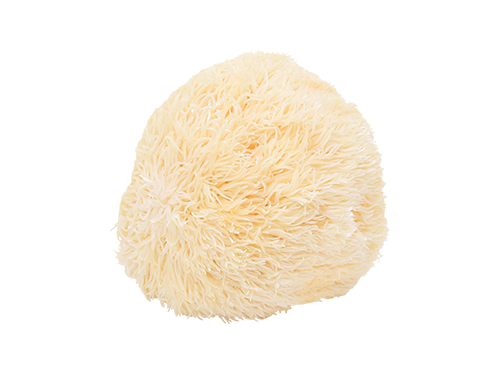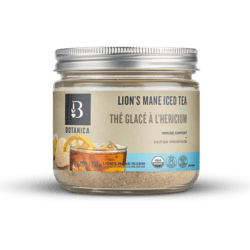Key Health Benefits
• Neuroprotective
• Improved cognition
• Anti-inflammatory
• Mood
• Immune modulating
Lion's mane got its name from its appearance. It has some resemblance to a lion’s mane and is often correlated with the look of the human brain and nervous system. Lion's mane mushrooms also have other common names: sheep's head, bear's head and the Japanese yamabushitake. The Latin name for lion's mane is Hericium erinaceus; both names mean "hedgehog." This mushroom grows on many different tree species. In a similar way that an apple is the fruit of a tree, the white mane is the fruitbody of the mushroom. The ‘tree’ is the rich network of mycelia (or “roots”) that spread down into the earth and can extend out over many kilometers.
Historic Use
Historically reserved only for royalty, it’s tender white flesh tastes similar to seafood.6 Traditionally used in Chinese medicine for stomach ailments, Lion’s Mane is effective against hepatoma cells as well as for prevention of gastrointestinal cancer. 6 Lion's mane mushrooms are increasingly studied for their neuroprotective effects. Two novel classes of Nerve Growth Factors (NGFs), neuropeptides important for nerve health, have been discovered in this mushroom so far. 3 They are being used for nerve repair, as well as improved nerve function and memory. The influence of lion's mane on neurological functions may also have other added benefits: improving mood, decreasing anxiety and depression while improving your ability to concentrate. 4 Lion’s mane has also been reported to have anti-microbial, anti-hypertensive, anti-diabetic, and wound healing properties among other therapeutic potentials. 5
Our Process
Lion’s Mane grows wild in the Olympic rain forest. A small sample is eco-harvested and then grown on organic brown rice in a controlled environment. After 4 generations it is certified organic and tested free of over 474 environmental contaminants. The budding mushroom (primordia) is harvested, freeze dried for superior nutrient preservation, and then heat treated to activate a number of the medicinal compounds and make them more bioavailable.
Source Location: Pacific Northwest of the United

References
Stamets, P., "Notes on nutritional properties of culinary-medicinal mushrooms." International Journal of Medicinal Mushrooms. 2005; 7:109-116.
- Hericium erinaceus: an edible mushroom with medicinal values.
- Lion's Mane: A Mushroom That Improves Your Memory and Mood?
Mori, K., Obara, Y., Moriya, T., Inatomi, S., Nakahata, N. 2011. "Effects of Hericium erinaceus on amyloid β(25-35) peptide-induced learning and memory deficits in mice." Biomed Res. 32(1):67-72.
- Lions Mane; Historical uses as well as recent medical breakthroughs







